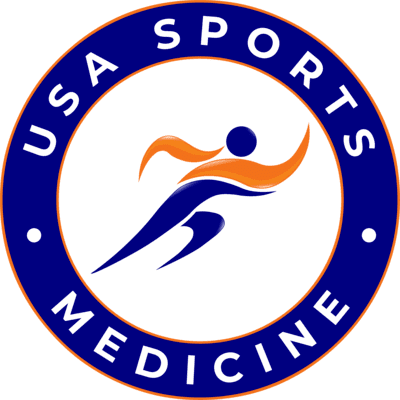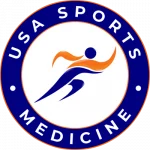Our Expertise
USA Sports Medicine Services
Advanced Therapeutic Exercise
Therapeutic exercises are highly selective physical activities that will be assigned by your physical therapist or chiropractor in order to restore and maintain strength, muscular endurance, flexibility, mobility, balance, and stability. The exercises assigned will be based on each individual patient’s diagnosis, assessment, and goals. The goal of these…
Anti-Aging and NAD+
NAD and NAD+ occur naturally in the body. They play a major role in the chemical process of generating energy. NAD+ is probably the most important cofactor for improving mitochondrial function. Mitochondria are the energy powerhouses of almost all living cells where micronutrients are converted to energy-rich ATP molecules…
ARPNeuro Therapy
ARPneuro Therapy uses electrical stimulation to safely send direct current electrical signals to the source of pain….
Blood Flow Restriction Therapy
Blood Flow Restriction Therapy in Miami If you are struggling to find an effective way to improve your physical health and regain your strength, blood flow restriction therapy may provide the answers you are looking for. This unique form of therapy can provide many benefits, including improved circulation, reduced…
Car Accident and Whiplash Recovery
Whiplash injuries associated with motor vehicle accidents can occur at speeds as little as 12 mph, and symptoms of whiplash may not arise until days or weeks after the initial injury. If you were involved in a motor vehicle accident, allow our chiropractors and therapists to perform a comprehensive…
Chiropractic
Chiropractors in Miami At USA Sports Clinic, we understand that pain can prevent you from doing the things you love. Whether you’re a weekend warrior or a professional athlete, we’re here to help you get back in the game. Our chiropractors are experienced in treating a wide range of…
Dry Needling
Dry needling is a technique similar to acupuncture that utilizes needles and techniques to provide a beneficial response. It is a highly effective physical therapy treatment that can help many orthopedic and neuromuscular conditions. Dry needling is a highly effective treatment for acute and chronic pain, decreased flexibility, joint…
Enzyme Nutrition Therapy
Enzyme nutrition is a cutting-edge science that is quickly gaining popularity worldwide. The primary goal of this therapy is to restore and enhance your overall health by improving the digestive system function, including the absorption of essential nutrients from food. With our revolutionary food enzyme program, we are able…
Golf Rehabilitation and Performance
In recent years, the game of golf has been evolving such that its players are becoming more powerful, more athletic, and more aware of the fact that proper biomechanics and fitness can allow them to play at the highest level without risking injury. It’s important to understand how the…
Headache Treatment
Headaches affect about 47% of the global population, with 20% of these headaches coming from the cervical spine. If traditional headache medications, including OTC pain relievers or prescription medication (Imitrex), haven’t done the trick, let our certified manual therapists give you an evaluation and see if your neck or…
IV Therapy
What Is IV Hydration Therapy? Intravenous therapy (a.k.a IV therapy or IV nutrient therapy) is a type of therapy commonly used for its wide range of health benefits. Because IV treatment is administered directly into the veins, the results may be faster than those of oral or other traditional…
Manual Therapy
Manual therapy is the skilled passive or assistive movement of joints and soft tissue by your physical therapist or chiropractor. Our staff is credentialed in the top manual therapy techniques including GrastonTM, Active Release TechniqueTM, cupping, joint mobilization/manipulation, soft tissue massage, myofascial release, and muscle energy techniques. These techniques…
Neurofunctional Acupuncture
Modern acupuncture has its origins in ancient Chinese Medicine and involves placing needles at certain points, mainly found along meridian lines. These lines represent organs of the body, and the treatment mechanism is based on the concept of balancing the energy force within the body. At USA Sports Medicine,…
Ozone Therapy
What is Ozone Therapy? Ozone is a natural gas that forms in the atmosphere and serves as a vital filter and barrier to ultraviolet solar rays. Did you know that Ozone also has medicinal uses? Whereas the oxygen we breathe is 2 combined oxygen molecules (O2), Ozone is 3…
Pain Relief and Recovery
At USA Sports, we use the most advanced techniques and modalities for short and long-term pain relief. We offer a variety of services to help reduce pain while providing individualized care designed to help you achieve your specific health and fitness goals. Our team is trained to provide high-quality,…
Physical Therapy
Physical Therapy in Miami Do you have pain in your neck or back? Are you struggling with injuries from an accident, surgery, or other trauma? Our Miami physical therapy team has decades of combined experience helping all types of patients, from those who have never been to physical therapy…
Post-Surgical Rehabilitation
Post-surgical rehabilitation is the process of re-establishing joint motion, muscle strength, and endurance after surgical intervention for orthopedic injuries. USA Sports Medicine has worked with some of the top surgeons in the country to develop protocols and get patients back to their pre-injury levels. Working with some of the…
PRP Therapy
PRP stands for platelet-rich plasma. Platelets are the components of your blood that are best known for blood clotting. Blood is made up of 55% plasma, 45% red blood cells, and about 1% white blood cells and platelets. Platelets also contain hundreds of proteins called growth factors, which are…
Regenerative Medicine
Our non-surgical, minimally invasive procedures offer unique solutions for those suffering with chronic joint, spine and musculoskeletal pain. Traditional medical options, such as cortisone injections, offer only short-term relief and do not heal an injury. …
Return to Sport
Our practitioners are credentialed with the only personal training certification that requires a 4-year Bachelor’s degree. As Certified Strength and Conditioning Specialists, we are able to take our patients from injury back to competing at the highest level. We also boast two of the only TPI (Titleist Performance Institute)…
Shockwave Therapy
USA Sports Medicine offers cutting-edge Shockwave therapy, a non-invasive medical procedure that utilizes high-energy acoustic waves to treat various musculoskeletal conditions and promote tissue healing. The therapy involves directing these shockwaves towards the affected area of the body to deliver controlled mechanical pressure pulses. Shockwave therapy is commonly used…
Stem Cell Therapy
Stem Cell therapy is a type of regenerative medicine treatment, aimed at healing your injuries by regenerating tissue. Stem cells are found throughout your body and are working constantly to balance tissue breakdown and tissue regeneration. Without active stem cells, you would die as your body could not repair…
Therapeutic Modalities
With many conditions, our outcomes are enhanced by utilizing specially-designed non-surgical devices known as “therapeutic modalities.” These devices may be as simple as an ice pack or heating pad, or as complex as electric stimulation, ultrasound, and iontophoresis systems. These modalities are used to manage pain, improve circulation, promote…
Ultrasound Diagnostics
US Guided Injections have now become the standard of care in order to safely and accurately perform musculoskeletal injections. We perform every procedure with ultrasound or fluoroscopic guidance to locate the point of injection in order to maximize the benefits of healing and/or pain relief….
Weight Management Program
Yo-yo dieting and vicious weight loss cycles are ineffective in the long-term management of weight. As we age, it becomes more difficult to maintain a healthy weight. USA Sports Medicine’s weight management protocol is a physician-supervised program designed to help any individual reach his or her specific weight loss…
Customer Reviews
Testimonials
Richard R.
Read More
Came to USA Sports Therapy as I play a lot of basketball and kept experiencing a lot of knee pain after. I came in for a visit and the staff was very friendly! On the first visit, Alex was able to determine the root of the problem immediately as I had a cyst behind my knee. I received therapy and I am back to 100%! Highly recommend USA Sports Therapy to anyone looking.
Jayson B.
Read More
Great place for therapy, Great staff and very clean facility. I Have been taking my daughter for all her injuries. flexible times are a big help and location easy to get to from anywhere.
Kell B.
Read More
After having a consultation with Dr. Joey, I was confident in placing my physical therapy needs with USA Sports Therapy. He goes above and beyond in ensuring you receive the best quality of care and it is clear to see that he truly enjoys what he does. I highly recommend it!
Derek P.
Read More
The USA Sports Therapy team is in a league of their own within the Miami community. I was fortunate enough to work with them on two different levels over the last 2 years. First, as a personal trainer in Miami, USA Sports Therapy was the only place I would refer my clients and feel comfortable with them getting the treatment needed to get back to normal in their everyday and active lives. Secondly, as a patient, I worked with the team to assist me on a few nagging issues and they were able to get me feeling 100% again. The staff is attentive, professional, and extremely talented. A no-brainer if you need assistant in the Miami area.
Michael M.
Read More
Over the years I've had a number of injuries requiring either long-term therapeutic attention or just a quick fix. Whatever I've needed the staff here have been effective at getting me back on track - and always with a smile! I've referred dozens of friends and everyone has been extremely satisfied with the attention they've received (I got a lot of thank-yous). Highly recommend USA Sports Therapy!!
Leigh D.
Read More
The team at USA Sports Therapy is amazing! I had a lower trap injury from working out and they fit me in before the weekend for a session and followed up to make sure I was recovering appropriately. I'll be back!
Leigh D.
Read More
The team at USA Sports Therapy is amazing! I had a lower trap injury from working out and they fit me in before the weekend for a session and followed up to make sure I was recovering appropriately. I'll be back!

